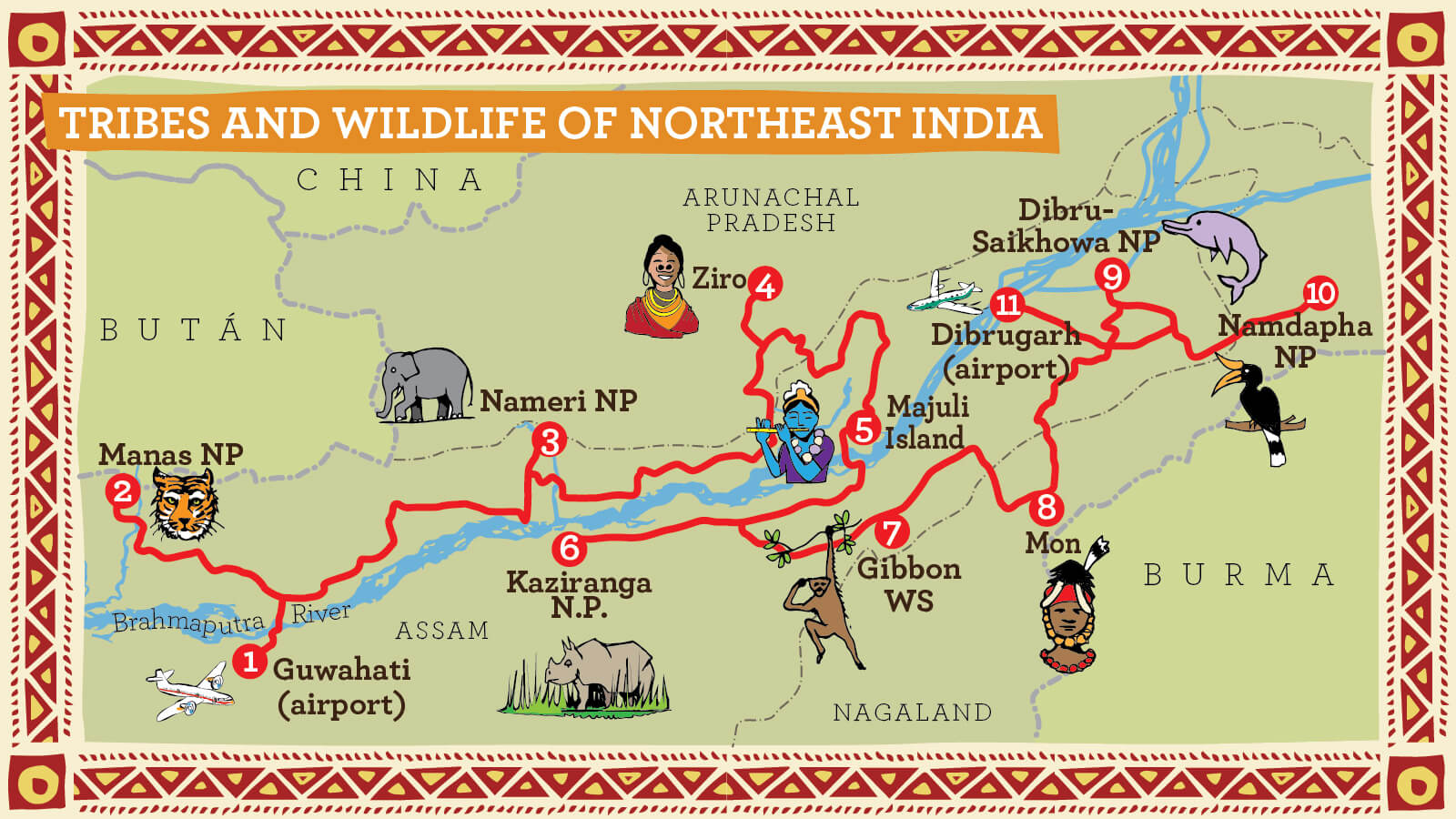Manas NP - Nameri NP - Ziro - Majuli - Gibbon WS - Kaziranga NP - Mon - Dibru Saikhowa NP - Namdapha NP
20D/19N
Available from October to April
This tour is a mix of both popular destinations and remote places of Northeast India and is a great way to start exploring the region's richness and secrets, through biodiversity-rich rain-fed forests, grasslands, mountain landscapes, and remote tribal villages where indigenous tribespeople live a simple and sustainable life.
It covers the wildlife areas in the state of Assam, along with cultural experiences with the tribes in Arunachal Pradesh and Nagaland. By the end of the many safaris and nature treks of the tour, you would have encountered a myriad species of wildlife such as rhinos, elephants, leopards, flying squirrels, deers, and otters to name a few. The variety of bird life in the region is equally spectacular with hundreds of species of resident birds and numerous colorful migratory birds. And then there are chances of seeing a fascinating river dolphin or perhaps even the majestic tiger. In total, you will be visiting five of the best national parks in the region, namely Kaziranga National Park, Manas National Park, Nameri National Park, Dibru-Saikhowa National Park, and Namdapha National Park. Of these, Manas and Kaziranga are UNESCO World Heritage Sites that nature lovers across the world visit. The variety in vegetation and landscape of these natural places will leave you immersed in their beauty, from deciduous forests, tropical and sub-tropical forests, grasslands, islands, and rainforests at the foothills of the eastern Himalayas. Trekking through the dense rainforest of Namdapha and camping in the beautiful riverside locations is also an incredible experience, being surrounded by pristine greenery.
Amongst the tribes, you will meet the various tribes of Assam such as the Mishing, Deori, and Sonowal Kachari on the spiritual island of Majuli which is located in the middle of the mighty Brahmaputra River. Experience a rural stay in traditional bamboo cottages and also relish the ethnic delicacies. One can also enjoy traditional dance performances of the tribes. In the quaint Himalayan valley of Ziro in central Arunachal Pradesh, you will get to meet and interact with the Apatani tribespeople who are one of the most fascinating tribes in India. They have various intriguing customs, such as the Apatani women wearing huge nasal plugs and having facial tattoos. It would also be a memorable experience to learn from them about their ancient religion and folklore. Lastly, in the faraway villages of the remote Mon district in the hills of Nagaland, you will live amongst the tattooed Konyak tribe who are again a very fascinating tribe. They follow a very traditional way of life and were once headhunters and are considered to be one of the most fierce tribes of Northeast India.
Experience an incredible long road trip across jungles, valleys, and mountains, crossing through the length and breadth of Northeast India, and discover both the fascinating cultures and environment that make this region so beloved.
Day 1 | Guwahati - Manas NP
After arrival at Guwahati airport, drive to MANAS NATIONAL PARK (5hrs), a UNESCO world heritage site that is famous for the Bengal Tiger. The afternoon can be spent visiting the nearby Fatemabad tea estate and villages of the Bodo tribe. Enjoy your stay at a luxurious jungle retreat or at beautiful eco-tourism cottages run by the local community who are associated with wildlife conservation and awareness.
Day 2 | Manas NP
At sunrise, go for an elephant safari to the central Bansbari Range. After breakfast, embark on a long jeep safari (4hrs) in the core area up to the Beki River near the Bhutan border. Catch a glimpse of Gaur (Indian bison), Giant flying squirrels, Sambar deer, Golden Langurs, and birds such as Cranes, Hornbill, Trogon, Babbler, and other foothill birds. Witness the amazing diversity of sub-Himalayan wildlife in the dense forests of the Mathanguri range and also enjoy the scenic landscape of the surrounding hills. A picnic lunch can be also arranged by the riverside. Wild tuskers migrating to Royal Manas National Park in Bhutan can sometimes be seen on the other side of the river. Return to the lodge by sunset and rest in the evening.
Day 3 | Manas NP - Nameri NP
After breakfast, drive to NAMERI NATIONAL PARK (9hrs), located near the scenic foothills of Arunachal Pradesh. The streams and swamps around Nameri make it a good destination to spot migratory birds. The rare White Winged Wood Duck, the state bird of Assam can be spotted here. The eco-tourism lodges here are involved with conservation projects, sometimes they also organize wildlife programs for the guests. The surroundings look beautiful during winter with mustard flowers blooming and the sight of the snowcapped Himalayas in the background.
Day 4 | Nameri NP - Ziro
Early in the morning, go on a guided birding trail cum nature walk. Walk through the canopy of old trees to spot birds such as the Imperial pigeon, Ibis Bill, Himalayan Kingfisher, Black-necked cranes, and many more species of birds from the watch towers. It is also sometimes possible to see Pygmy hog, Wild boars, Hog deer, elephants, bears, and Gecko lizards during the forest trek. Return for breakfast, and then travel uphill to Ziro (9 hours) in Arunachal Pradesh, a beautiful Himalayan valley located at an altitude of 1500m. The countryside of Ziro is surrounded by evergreen forests, terraced rice farms, and misty mountains. Ziro is the home of the Apatani tribe. The indigenous Apatani women are renowned for their nose plugs and indigenous tattoos. Ziro has been listed for nomination as a UNESCO world heritage site for its unique culture. Enjoy your rural stay with an Apatani family and experience their ethnic cuisine.
Day 5, 6 | Ziro
Spend the next two days visiting homes and interacting with the Apatani people in villages such as Hong, Hari, Baro, and Siiro. The villages still have traditional wooden houses built on stilts, the villages are compact with houses built close to each other as the Apatanis often faced raids from the fierce neighboring tribes. The Lapan is a platform at the center of every village which serves as the point of gathering for all occasions, tall Babo totem poles can be also seen in front of most houses. One can also go for a hike in the bamboo and pine plantations of the Apatani villages. A visit to the terraced farms to see their wet rice cultivation system and fish farming can be very interesting. Also visit the shrine of the Donyi Polo religion, the indigenous faith of the Apatani people. Later, visit the local market at Hapoli town and enjoy the panoramic view of Ziro valley from the viewpoint at Hapoli.
Day 7 | Ziro - Majuli
Drive downhill to Dhunabari Ghat (7 hours) and catch the ferry across the Subansiri River to MAJULI, the biggest river island in the world and a well-preserved spot of Assamese and tribal culture. Arrive by afternoon and spend the rest of the day leisurely exploring the vast island and the beautiful countryside. The large wetlands and lakes on the island also attract many birds which interest many ornithologists. You can also enjoy the spectacular sunset by the riverside. Enjoy a rural stay, relish the ethnic Mishing cuisine and also try the local brew, Apong. Traditional Mishing dance performances can be arranged upon prior request. Your stay will be in a traditional bamboo cottage with basic amenities.
Day 8 | Majuli
Visit some of the old Assamese monasteries of the 17th century such as Auniati, Kamalabari, and Dakhinpat Sattras, built by the followers of the medieval saint Srimanta Sankardev. Here the monks learn a unique form of art, drama, and music, and follow a Neo-Vaishnavite philosophy which was started by Sankardev. Visit the mask-making center at Samuguri Sattra where extremely elaborate traditional masks are made by the monks for the Bhaona (dance dramas) which depict scenes from Hindu mythology. Also visit the Salmara potters' village, unique on the island, where potters make earthenware without the use of a potter's wheel! Try your hand at pottery and sculpting with riverine clay. In the afternoon, visit villages of the Mishing tribe, the indigenous inhabitants of the island. Visit their homes, interact with the villagers and observe their traditional lifestyle. One can also learn weaving on traditional hand-looms.
Day 9 | Majuli - Gibbon WS - Kaziranga NP
Catch the return ferry in the morning to Nimati Ghat and drive to HOOLONGAPAR Gibbon Sanctuary (3 hours) near Jorhat, a unique habitat dedicated to Gibbons. Go for a guided nature walk accompanied by a naturalist to see the various species of primates such as Hoolock gibbons, Assamese macaque, Capped langurs, Pig-Tailed monkeys, Slow Loris, etc. One can also see a variety of butterflies. After lunch, proceed to the biodiversity hotspot of KAZIRANGA NATIONAL PARK (2 hours), the main destination for wildlife in the Northeast which is famous for the one-horned rhino. Kaziranga was declared a protected forest area by Viceroy Lord Curzon in 1904 and later became a UNESCO heritage site for its unique environment. After arrival, check-in at a boutique jungle lodge or in a luxurious resort and relax.
Day 10 | Kaziranga NP
In the morning, enjoy an elephant safari in the popular Central Range at Kohora to see the rhinos from up close. Then, go on a guided jeep safari in the dense forests of the Eastern Range, which is a good opportunity to see the migratory birds and sometimes tigers on the banks of Brahmaputra. River Dolphins, wild ducks, and turtles can be also seen by the riverside. After lunch, proceed for another jeep safari in the Western Range to see the Wild Buffaloes, Elephants, Swamp deer, sloths, Jungle cats, mongoose, and birds such as Pelican, Parakeets, Fish Eagles, and Drongos. Govt-run elephant safari seats are subjected to availability.
Day 11 | Kaziranga NP - Mon
After breakfast, travel to MON (9 hours) in the Patkai hills of northern Nagaland. Mon can be considered as one of the most remote regions of eastern India and is the home of the fierce headhunting Konyak Tribe, known for their tattooed faces, wood carvings, and gun-making skills. The Konyaks can be easily recognized by the other Naga tribes for their tattoos earned from their head-hunting expeditions, which were banned by the government in the 1960s. Your stay will be in a boutique farm stay at Shiyong Village two hours from Mon town.
Day 12 | Mon
After breakfast, travel to the remote eastern corner of India to Longwa Village (2 hours), half of which falls in Myanmar. Visit the home of the Angh (village chieftain), whose house interestingly is divided by the border. Interact with the chief and other Konyak families to learn about their rich history and culture. See their local crafts and war trophies collected in the Morungs (dormitories), where young children were taught their traditions. The Morungs also have large log drums which are used to alert the villagers. One can also purchase beautiful tribal ornaments and interesting metal craft souvenirs from the villagers. Explore the countryside, and walk down their farms where they practice Jhum cultivation. Later, return to Mon by evening.
Day 13 | Mon
Visit a few nearby Konyak villages such as Hongphoi, Wangla, and Old Mon. A good opportunity to observe the Konyak lifestyle, tribal arts, and crafts. In Hongphoi, it is easy to see village elders with tattooed warrior faces. Visit the houses of the chiefs, which are decorated with skulls of wild buffaloes and other hunted animals. Elderly villagers with tattoos can be sometimes seen gathering at the chief’s house or making bamboo crafts in the Morungs nearby. An old-world charm exists as the long-houses are very traditional, constructed in an ancient Konyak way of using palm leaf roofing. Many villagers here still continue to live their old traditional lifestyle.
Day 14 | Mon - Dirbu Saikhowa NP
After breakfast, drive to TINSUKIA (7 hours) near Dibru-Saikhowa National Park, an interesting birding destination to see wetland birds. The swamps of Dibru-Saikhowa were initially declared a protected forest for the conservation of a few endangered avifauna species but slowly emerged as a prominent biodiversity hotspot. Check-in at a business hotel in the town or enjoy a luxurious tea garden stay close to the reserve.
Day 15 | Dibru Saikhowa NP
Leave early morning for a birding tour to Dibru-Saikhowa National Park, a unique biodiversity region located on an island. Enjoy a boat ride in Magori-beel, a lake rich in birdlife. Later go for a river safari in the Brahmaputra to the interiors of Dibru-Saikhowa where you may come across river dolphins. Go for a walk in the forested islands. Good chances of seeing the rare White-winged wood Duck, the state bird of Assam, and the wild feral horses.
Day 16 | Dibru Saikhowa NP - Namdapha NP
Drive to the distant town of Miao near DEBAN (6 hours), the entry point of NAMDAPHA NATIONAL PARK in eastern Arunachal Pradesh. En route cross numerous tea plantations and the fertile countryside of Assam. One can also visit the World War II memorial, Digboi Oil Refinery Museum, and the Miao Buddhist Vihara on the way. Namdapha is a dense rainforest along the banks of the Noa-Dihing River and has temperate vegetation in the higher altitudes. It is the third largest national park in India in terms of area and extends into Myanmar as well. Namdapha is also the only wildlife park in the world that has four species of big cats: the tiger, leopard, clouded leopard, and snow leopard. Though the sanctuary was initially a Tiger Reserve, it later became better known as a birding hotspot due to the large number of rare birds which can be seen in this remote forest. Your stay will be at the cozy forest guesthouse with basic amenities.
Day 17 | Namdapha NP
After breakfast, start trekking deep inside Namdapha towards Hornbill Camp (3 hours) accompanied by a forest guide and porters. Set up tents after reaching and rest. The rest of the day will be free to explore the forest for birding around the campsite. A large number of Hornbills can be seen perched on the trees here. The biodiversity of the rainforest is amazing and unique, where hundreds of birds have so far been recorded and equally fascinating mammalian diversity. The forest hike is a good opportunity to be surrounded by astounding rainforest biodiversity of birds, insects, animals, plants, and fungi species. A bonfire can be arranged in the evening. Your night stay will be in tents.
Day 18 | Namdapha NP
Continue trekking through the dense undergrowth of ferns, bamboo, cane, moss, and wild bananas up to Happy Valley (2 hours), a beautiful camping site by the riverside. Enjoy a picnic lunch at the idyllic spot which offers a spectacular view of the virgin forests and the distant mountains. The afternoon will be free for birding, spot birds such as Hill Partridge, Green Cochoa, Ward’s Trogon, Pied Falconet, Leaf Warblers, and also many migratory birds. The Flying Squirrel can also be easily seen in Namdapha and there are also chances of sighting the shy Hoolock gibbons. Your night stay will be in tents, enjoy the sound of the stream flowing by and the melodious chirping of birds in the surroundings.
Day 19 | Namdapha NP - Dibrugarh
Trek back to Deban (1 hour) in the morning and bid farewell to the porters and forest guide. After breakfast and a little rest, drive to DIBRUGARH (7 hours), an important tea center in Assam. Check in to the old Gymkhana Clubhouse with modern amenities or stay at a colonial-styled heritage bungalow with luxurious amenities at a nearby tea garden. The evening will be free to relax or visit the local market to purchase some fine Assam tea as memorabilia.
Day 20 | Dibrugarh
After breakfast, transfer to the airport for departure. End of tour.
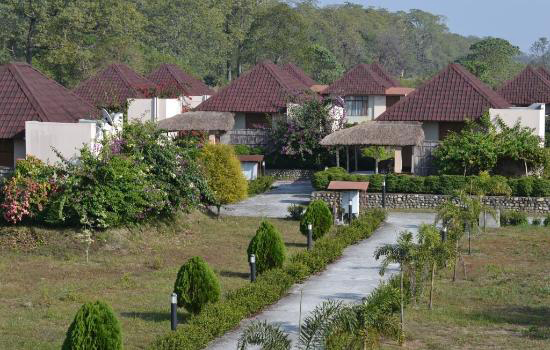
Musa Jungle Retreat sprawls across 8 acres of virgin territory along the southern boundary of Manas National Park. The property is almost literally an arm’s length away from the park offering views of fauna and birds from the rooms itself. The rooms and cottages are well furnished and spacious offering modern amenities that are otherwise difficult to find in the wild.
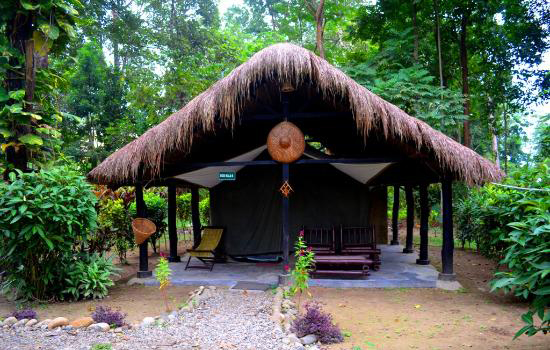
Run by a local NGO involved in conserving two endangered species, Nameri Eco Camp is located near the Bhoroli River midst quiet and quaint surroundings. The property offers deluxe styled cottages and camps with colorful fabrics, private bathrooms, sturdy beds and thatched-roof shelters that make the experience relatively luxurious. An atmospheric open-sided restaurant is where a lot of conversations happen.
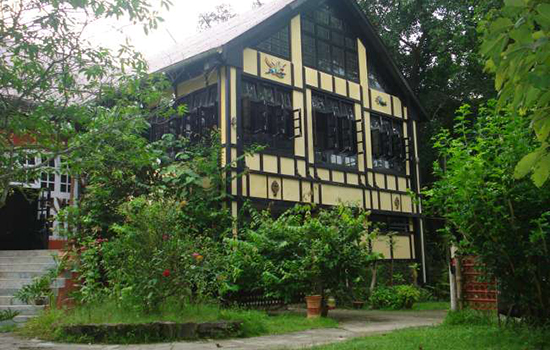
Amidst a setting of Assamese countryside, bamboo groves and tea gardens, Wildgrass Lodge is a boutique colonial styled jungle lodge with extensive grounds where the enthusiastic owner grows more than 200 different plant species. The spacious rooms are fairly luxurious with wooden floors and private baths. The grand dining hall is charmingly old-world and provide an ambient setting for conversations and friendships.
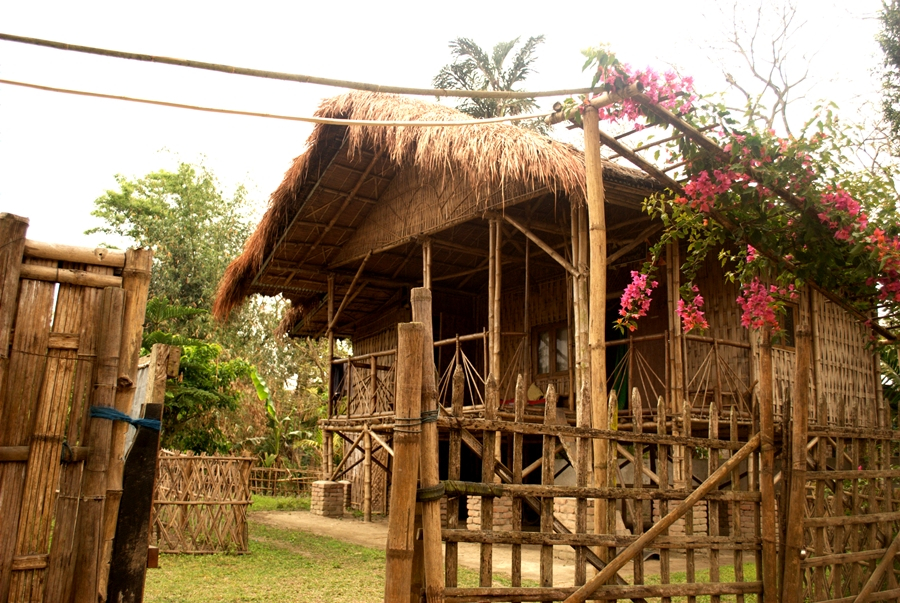
La Maison De Ananda, the 'house of happiness', was built by a French couple who fell in love with Majuli and gifted it to a local family as a source of income from likeminded travelers who visit the island. The stilt cottage is built in local ways using bamboo and cane. Interiors are clean and basic, in tune to the village life existing around. There's a sit-out where one can relax or have pleasant conversations.
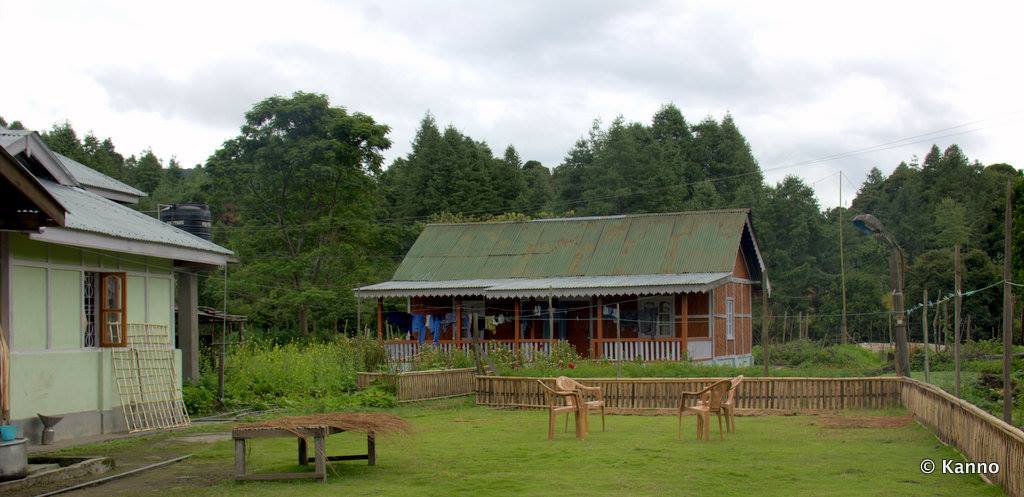
Homestays are important in promoting sustainable tourism in Ziro, the land of the ancient Apatani culture, while also engaging visitors to have an authentic experience of staying with an Apatani family and learning about their ways. The rooms are simple, airy, clean, with fairly standard amenities.
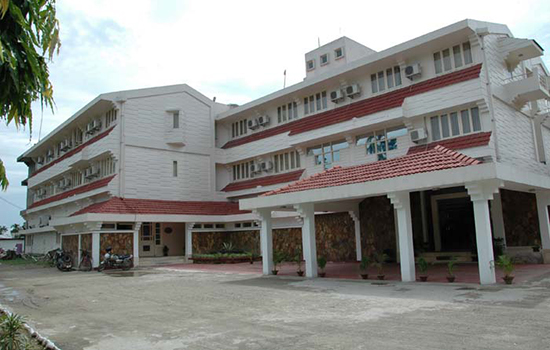
Located nearby to Dibru Saikhowa National Park, Aroma Residency is a business hotel with spacious modern rooms and has an atmospheric small town location. It is good as a base to explore the national park due to the scarcity of more interesting options.
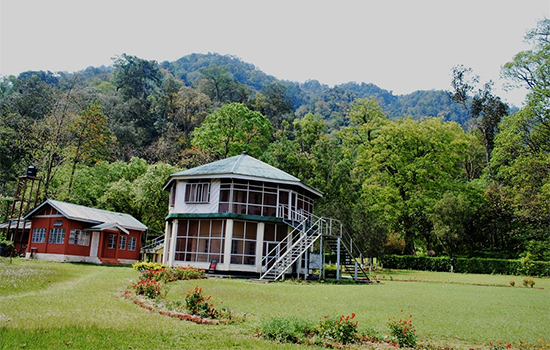
Set midst a sprawling lawn enclosed by the great rainforest, Deban Guesthouse is run the forest department of Namdapha National Park. The delightful cottage has a few simple rooms with basic but clean amenities, homely service and great views of the national park greenery.
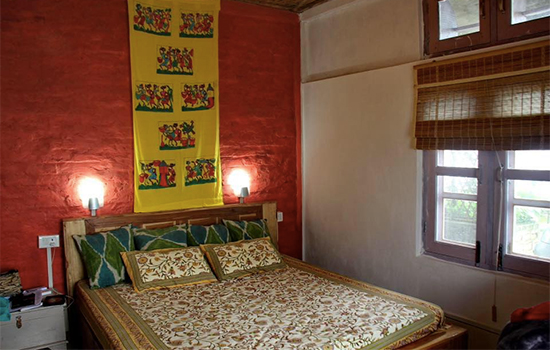
The Konyak Tea Retreat is located at Shiyong Village near to Mon town. Run by an enthusiastic Konyak lady who is passionate about responsible tourism and her culture, the highlight of the property is its located midst verdant hills, villages, tea estates and fruit orchards. Rooms have a charming decor, are spacious and fairly modern.
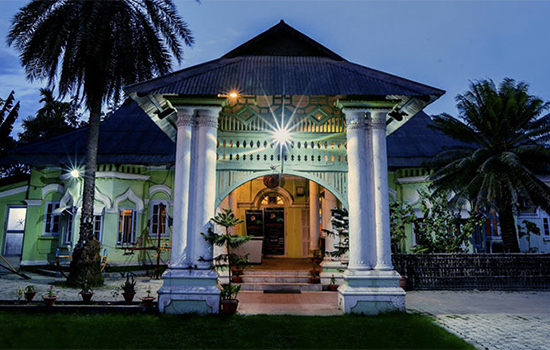
With a small town open atmosphere, The Gymkhana Clubhouse in Dibrugarh is run by enthusiastic town folks and provides splendid modern rooms and amenities such a pool and a gym. The clubhouse which was built in 1923 consists of a restaurant and a well stocked boutique barroom.
curated experiences
Our itineraries are one of a kind, curated from our own personal travel experiences, from choosing the best logistically correct routes to the most interesting stay options.
native guides
Our tour guides are native to the region, and bring you an insider view into the life and culture of Northeast India, sharing with you authentic local experiences and fostering friendships.
experts in tours
When travelling with Greener Pastures, you can be assured that you are in the hands of experts who are knowledgeable and passionate about the region. Expect hassle-free, easy-going, and insightful travel.
By choosing us, we share together a pledge towards responsible tourism, and share a belief that travel has the power to positively transform local livelihoods, cultures and environment.
The tours listed in this website are our own well-researched itineraries that come with a great degree of flexibility and customization. Each tour is therefore individually planned around your requirements and budget. This provides you with a sense of choice and reliability, and also helps us meet customer expectations much more closely, making your travel experience all the more memorable.
Please fill out the form below to tell us more about the tour you are interested in and a response with costs and information will be sent to you as soon as possible.
Booking Procedure
Our tours can be confirmed with an advance deposit of 30% which can be transferred to our bank account.
Please go through the Terms and Services listed in our website.
Cancellation Policy
Greener Pastures must receive notification of cancellation in writing, email or phone call. At the time we receive the request, refund will be based as follows:
1. Cancellation more than 15 days prior to departure = 75% refund of deposited advance amount.
2. Cancellation less than 15 days prior to departure = 25% refund of deposited advance amount.
